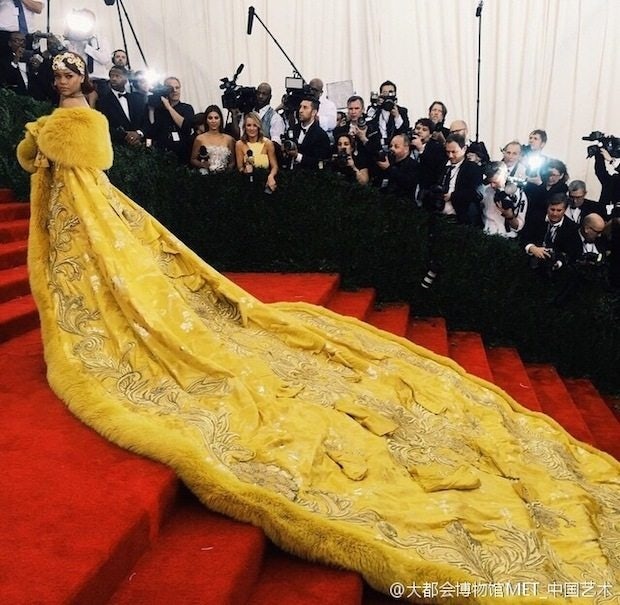
Rihanna in Guo Pei at the 2015 Met Gala. (Weibo/Metropolitan Museum of Art)
Making over 70 percent of luxury purchases outside of mainland China, Chinese consumers now support a vast network of brands and industries worldwide, boosting luxury and fashion brands as well as retailers, hotels and tourism providers.
Now, a growing number of tourism industry professionals see what global fashion and luxury watchers have known for the past five years (at least): Chinese consumers hold the key to continued global financial success for major brands. What this vast and diverse demographic likes and dislikes can influence the stock movements of large public companies like Kering, LVMH, Coach, Tiffany, Nike, and many more.
Despite their sway on brand marketing and merchandising, Chinese tastes and fashion trends have only begun to manifest in the field of fashion design. A growing number of Chinese international students are now heading to top creative institutions like the Parsons School of Design in New York or Central Saint Martins in London. Meanwhile, the vanguard of young Chinese designers—many of whom trained at these schools—are taking part in fashion weeks in Europe and the United States, with some now exhibiting or selling their designs with forward-thinking retailers around the world.
Perhaps the most visible indication of China’s growing soft power in the fashion industry came at last week’s Met Gala in New York, which celebrated the launch of the new Met exhibition “China: Through the Looking Glass.” The exhibition showcases ancient art from China, Western designers’ interpretation of Chinese design (such as Tom Ford’s dragon dress for Yves Saint Laurent), and highlights up-and-coming Chinese fashion designers.
Attracting no shortage of buzz in the United States, the exhibit and Gala also succeeded in grabbing the attention of the Chinese audience, which actively watched and judged the American and Chinese celebrities and their gowns of choice for the night. Perhaps the most discussed looks of the night were Sarah Jessica Parker’s flaming headdress (which bore a strong resemblance to one of the Beijing Olympic mascots), and Rihanna’s dress by Chinese designer Guo Pei, which was most often compared to a jianbing—a traditional Chinese street-food crepe.
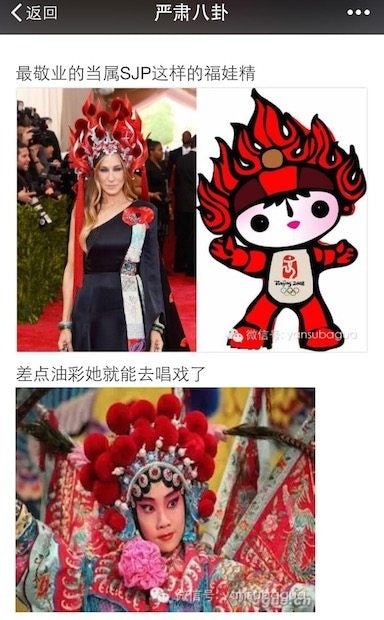
One post about the jianbing dress and Beijing mascot hat by WeChat influencer Yansu Bagua (“Serious Gossip”) generated nearly 50,000 views within one day.
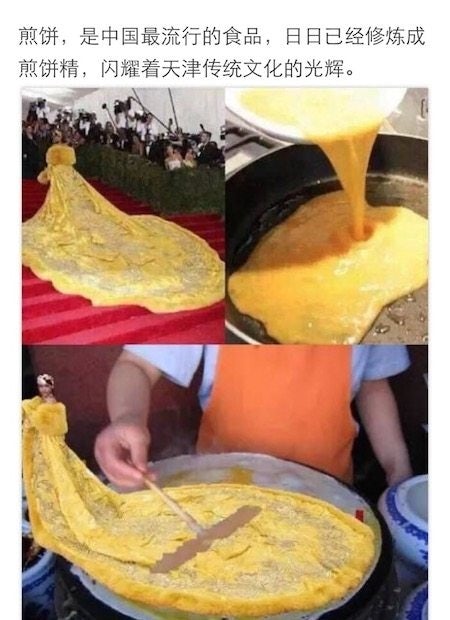
Despite the satirical posts, some Chinese celebrities and designers did in fact receive applause back home. Beijing-based designer Christopher Bu, whose long collaboration with actress Fan Bingbing has won him no shortage of accolades, hit another home run with Fan’s dazzling evening gown. Fan’s gown, inspired by the Forbidden City, was widely considered one of the best looks of the evening.
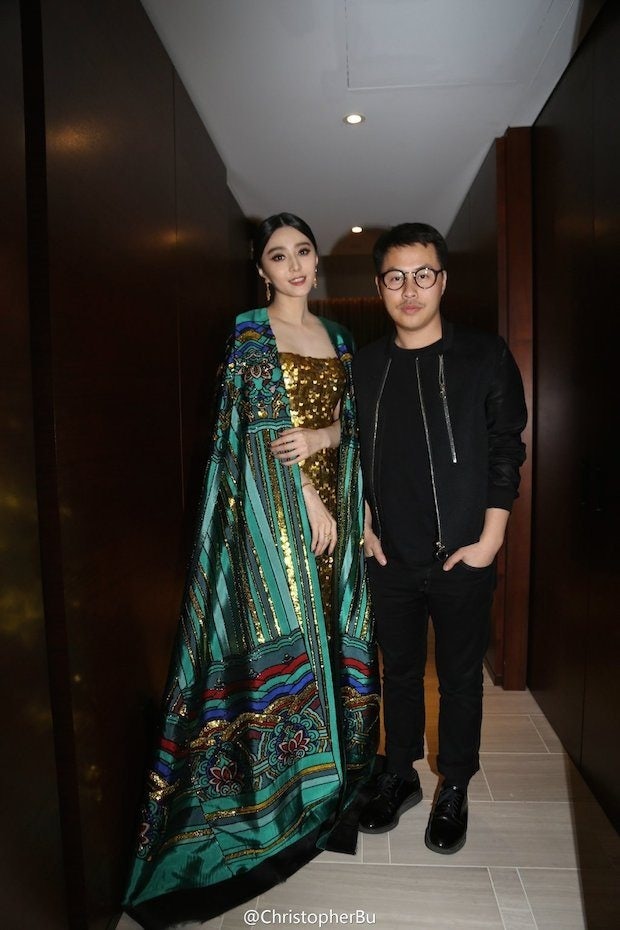
Fan Bingbing in her Met Gala dress with designer Christopher Bu. (Weibo/Christopher Bu)
The diversity of reactions to the dresses worn by Rihanna and Fan Bingbing, both designed by homegrown Chinese designers, indicate that Chinese consumers are less impressed with over-the-top designs with overt cultural motifs than sophisticated and subtle interpretations of their heritage.
Beyond the event itself, the Met Gala provided an opportunity for retailers to engage Chinese tourists and shoppers in New York. Iconic New York retailer Bergdorf Goodman dedicated one of their iconic window displays to the event, while Barneys New York launched a capsule collection by acclaimed London-based Chinese designer Huishan Zhang.
But New York isn’t the only place looking to court Chinese shoppers with Chinese designers. Last week in Los Angeles, ELLE China partnered with Sunset Boulevard fashion boutique H. Lorenzo to showcase a group of up-and-coming Chinese fashion designers curated by ELLE China. In addition to Huishan Zhang, ELLE pulled together Belle Ninon, Nicole Zhang, Helen Lee, Judy Hua, Chictopia, Xiao Li, and Babyghost. Song Jia, a prominent Chinese actress known for her roles in popular TV dramas, attended the event, giving it a visibility boost back home. Said Song, dressed in a Judy Hua design, “People in big Chinese cities are more and more conscious and appreciative of local Chinese designers.”
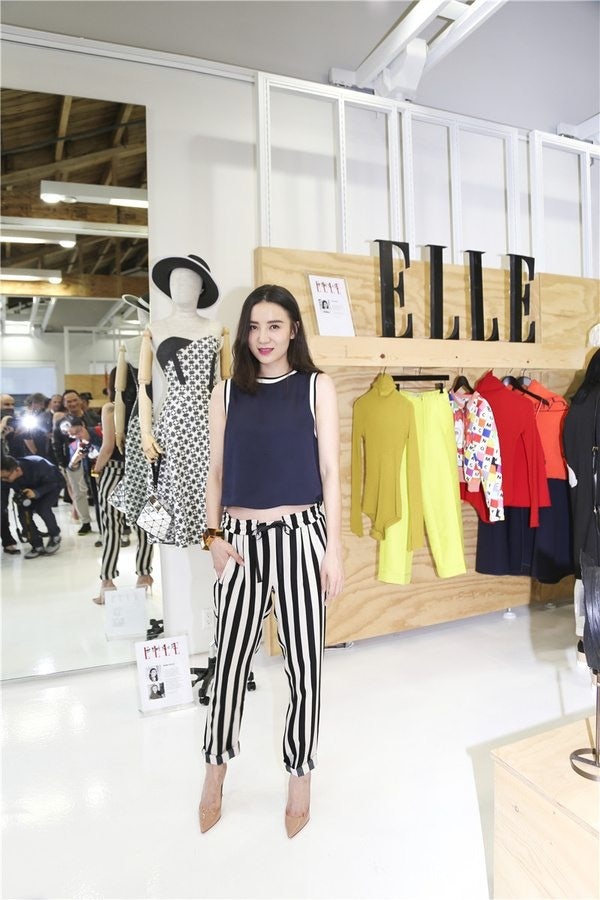
Chinese celebrity Song Jia (Sohu)
Although designer collaborations and special events can be an effective way to engage the global Chinese audience and build buzz, Western companies need to ensure any such efforts remain subtle and true to their brand story and identity. Infusing too many “traditional Chinese elements” risks misfires that could drive the wrong kind of buzz on Chinese social media—a lesson learned by numerous brands in the “localization” boom of 2010-2011.
To this end, collaborating with the right designer on a capsule collection (like Huishan Zhang’s) can be a good way to bridge the gap between core and emerging consumers, giving long-time consumers something new while attracting the attention and interest of increasingly sophisticated Chinese shoppers.
Renee Hartmann is the co-founder of China Luxury Advisors.
